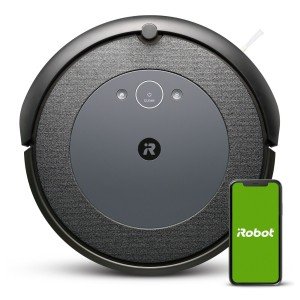Robotic Hoovers: Revolutionizing Home Cleaning
In the hectic world we live in, where time is of the essence, family tasks frequently take a rear seat. Amongst the most considerable developments in domestic innovation are robotic hoovers, or robotic vacuum. These intelligent makers have transformed the way individuals approach cleaning their homes, permitting effectiveness and convenience that standard vacuuming can not match. This post delves into the functions, advantages, and future of robotic hoovers, along with addressing common inquiries about their performance and upkeep.
What Are Robotic Hoovers?
Robotic hoovers are automated vacuum cleaners developed to browse through rooms and tidy floorings without human intervention. automatic floor cleaner use various technologies, including sensors, cameras, and expert system, to spot dirt and browse barriers, making them an important addition to modern homes.
Key Features of Robotic Hoovers
Smart Navigation: Most robotic vacuums are equipped with advanced sensory technology that allows them to map and browse areas efficiently. This consists of:
- Lidar Sensors: To produce a map of the home.
- Infrared Sensors: To prevent obstacles and drops (like stairs).
- Cliff Sensors: Prevents the system from falling off edges.
- Automated Scheduling: Many robotic hoovers can be programmed to clean up at particular times, maximizing benefit for users.
- Self-Charging: Most designs return to their docking stations when their battery is low, ensuring they are always charged and ready to clean.
- App Connectivity: Modern robotic vacuums typically feature apps that allow users to control their devices from another location, set schedules, and even view cleaning maps.
- Multiple Cleaning Modes: Options such as spot cleaning, edge cleaning, and arranged cleaning enable personalized cleaning routines based upon the home needs.
Advantages of Robotic Hoovers
- Time-Saving: Robotic hoovers can operate separately, releasing up important time for property owners to focus on other tasks.
- Consistency: They supply consistent cleaning performance and keep floor cleanliness without the inconsistency that often includes manual vacuuming.
- Ease of access: With their compact design, robotic hoovers can easily reach under furnishings and into tight spaces where conventional vacuums battle.
- Upkeep of Various Floor Types: Many robotic vacuum can adjust to various surfaces, consisting of carpets, hardwood, tile, and more.
- Integration with Smart Home Systems: They can be linked to smart home gadgets, enabling users to incorporate them into their home automation systems.
Comparison of Popular Robotic Hoovers
Here's a quick comparison of some popular models in the market:
| Model | Smart Navigation | App Connectivity | Battery Life | Price Range |
|---|---|---|---|---|
| iRobot Roomba 675 | Yes | Yes | 90 minutes | ₤ 250 - ₤ 300 |
| Neato Botvac D7 | Yes | Yes | 120 minutes | ₤ 600 - ₤ 700 |
| Eufy RoboVac 11S | Yes | Limited | 100 minutes | ₤ 200 - ₤ 250 |
| Roborock S6 | Yes | Yes | 150 minutes | ₤ 500 - ₤ 600 |
| Shark ION Robot | Yes | Yes | 120 minutes | ₤ 250 - ₤ 350 |
Maintenance and Care for Robotic Hoovers
Regardless of their automated functions, robotic hoovers need regular maintenance to ensure their optimal efficiency. Here are some suggestions for maintaining a robotic vacuum:
- Empty the Dustbin Frequently: Regular clearing helps maintain suction power.
- Clean the Brushes: Hair and debris can clog brushes; routine cleaning prevents this.
- Check the Filters: Dirty filters can impede performance; they ought to be cleaned or replaced as defined by the manufacturer.
- Check Wheels and Sensors: Ensuring that the wheels are devoid of obstacles and sensors are tidy will improve navigation and efficiency.
- Update the Firmware: Keeping the robotic vacuum's software up-to-date can resolve bugs and improve functionality.
Future of Robotic Hoovers
As innovation continues to progress, the capacity for improvements in robotic vacuums is large. Developments on the horizon might include:
- Improved AI Capabilities: Enhanced finding out algorithms may enable robotic hoovers to better comprehend homes and cleaning needs.
- Integration with More Smart Home Devices: Future designs might become a lot more incorporated with home automation systems, boosting usability.
- Advanced Cleaning Features: Innovations like mopping abilities and deeper carpet cleaning functionality could expand their energy.
- Sustainability Features: Future models may include eco-friendly innovations, such as solar charging or recyclable materials.
Frequently Asked Questions (FAQs)
How much do robotic hoovers usually cost?
- Costs for robotic hoovers vary significantly depending upon functions, however usually variety from ₤ 200 to ₤ 800.
How loud are robotic hoovers?
- Most robotic vacuums run at a noise level between 50 to 70 decibels, which is quieter than traditional vacuums.
Can robotic vacuums handle pet hair?
- Yes, many robotic hoovers are designed specifically with effective suction and brushes to deal with pet hair effectively.
Do robotic vacuums work on carpets?
- Definitely. Many robotic vacuums can clean up various types of surface areas including carpets, wood, and tiles.
Do I need to program my robotic vacuum?
- While you can set schedules and preferences through an app, lots of models can likewise operate on demand or automatically as soon as charged.
In conclusion, robotic hoovers represent an exceptional leap in family cleaning innovation, using amazing benefit and efficiency that attract contemporary property owners. As technology continues to advance, these devices guarantee even better cleaning capabilities, further boosting home health and upkeep. For anybody wanting to streamline their cleaning routines, buying a robotic hoover can be an immensely fulfilling choice.

